2016 GEC Catalyst Awards
2016 GEC Catalyst Awards
The 2016 Global Electronics Council (GEC) Catalyst Award winners were recognized at the Electronics Goes Green Conference in Berlin, Germany, for their accomplishments in “innovations in resource reduction.” AMD won the 2016 Catalyst Award for “Catalyzing Impact at Scale.” PuzzlePhone won the 2016 Catalyst Award for “Catalyzing Disruptive Innovation.” Additional information about AMD’s and PuzzlePhone’s winning nominations, as well as those from the other Finalists, is available below. In 2015, Dell, Inc. won the inaugural Catalyst Award for its innovative use of closed-loop plastics.
2016 Catalyst Award Winners

AMD 6th Generation A-Series Accelerated Processing Unit (APU)
Advanced Micro Devices (AMD) designs component processors for high-performance computing, immersive technology and datacenters. It and other semiconductor companies have long benefited from Moore’s Law, the doubling of the number of transistors on a chip about every two years as manufacturing technology advances allow for smaller and smaller transistors, and smaller computer chips. Historically, each smaller generation of these chips would consume fewer resources while providing ever greater performance. However, the near clockwork improvements derived from Moore’s Law have slowed substantially in recent years. This stems from the fact that the miniaturization of transistors is now bumping against physical limits, affecting the design parameters of processors. As transistors get smaller, leaking power current becomes a greater engineering challenge because transistor threshold voltages have been reduced to the point where the devices don’t completely shut off. This breakdown in Dennard scaling has resulted in higher power consumption for the highly integrated, high-performance devices that consumers need in medical, research, financial and other critical industries. Even so, AMD is on track to achieve a stretch goal to dramatically improve the energy efficiency of its microprocessors by 25 times from a 2014 baseline—a fundamental part of the company’s business strategy called the 25×20 Initiative. In 2015, AMD released the 6th Generation A-Series Accelerated Processing Unit (APU), codenamed “Carrizo”. Carrizo consumes substantially fewer natural resources both in production and in use compared to its predecessor, resulting in a much smaller impact on the environment. This achievement is a result of intense engineering work that led to innovations including a new memory architecture, power efficient silicon to optimize voltage and reduce power consumption, high density libraries to reduce travel paths and reduce electrical leakage from the circuits, and intelligent power management that dynamically adjusts power in response to the tasks being run. When taken together, Carrizo achieved a 2.4 times increase in energy efficiency compared to the previous product. And significantly, upgrading to Carrizo from the previous product results in a 46 percent reduction in life-cycle greenhouse gas emissions, based on a three-year service life. AMD has seen increasing momentum for the Carrizo 6th gen APU, especially for laptop computers. This is evident based on new design wins with technology manufacturers (OEMs), new large-scale commercial deployments, and the growing adoption of AMD technology that improves the visual experience during video playback and gaming. The new Carrizo processor offers all-day battery life, and excellent performance. As always, there is extreme competitive pressure in the computer market for new processors that provide even greater performance while minimizing power consumption. This is made more challenging due to the slowdown in Moore’s Law. Gains that once were largely a byproduct of manufacturing gains now must be augmented with advanced engineering and a total company commitment. Further gains will come from improvements in semiconductor architecture and innovative power management, as well as manufacturing process optimization. These gains will be embodied through new processor generations that will be released by AMD over the next several years, and with even greater energy efficiency improvements. With product releases on the company’s roadmap, AMD is on track for achieving the goal to improve APU energy efficiency 25 times between 2014 and 2020, that will lead to new and immersive digital experiences while at the same time limiting energy use and environmental impact.

International Telecommunication Union
PuzzlePhone, The Upgradeable Modular Smartphone by Circular Devices Oy
2016 Catalyst Award Finalists
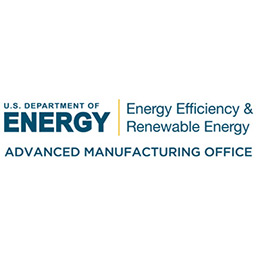
Superior Energy Performance (SEP) Certification for Increased Energy Productivity under ISO 50001
Superior Energy Performance® (SEP™) certifies industrial facilities and commercial buildings that implement an energy management system that meets the ISO 50001 global energy management system standard and achieve verified improved energy performance. An energy management system (EnMS) helps a facility establish the policies and procedures to systematically track, analyze, and improve energy efficiency. ISO 50001 Energy management systems – Requirements with guidance for use (or simply “ISO 50001”), which was developed with participation by over 40 countries, is the globally accepted best practice for an EnMS. SEP is a valuable tool to boost energy efficiency and reduce greenhouse gases (GHG) throughout the electronics product supply chain. Sustainability efforts typically focus on the end use of a product or its recyclability, even though production processes can account for the vast majority of a product’s GHG emissions. For example, production of the Apple iPhone 6s accounts for 84% of the product’s GHG emissions, compared to customer use at 10%. This example is one of many that demonstrates that all phases within the entire life cycle of a product—from the extraction of raw materials, production of components by various suppliers, manufacturing of the product, distribution, retail, and customer end use—also contribute its total energy and carbon footprint. Supply chains are complex and multifaceted, but production processes by suppliers and manufacturers present great opportunities to reduce a product’s energy and carbon footprint. Electronic product OEMs can work with their suppliers to use SEP to help reveal hidden energy savings opportunities and embark on continually improving energy performance during production processes along the supply chain. Systematic energy management is a proven strategy to reducing energy consumption and greenhouse gases (GHG) along any product’s supply chain. The SEP certification framework uses the ISO 50001 international standard to help companies along the supply chain implement an EnMS to improve energy performance in a persistent, sustainable manner. Nearly 50 facilities are participating and 44 facilities have been certified to the SEP program (38 in the U.S., 4 in Mexico, and 2 in Canada). These facilities find value in the robust, data driven energy performance improvement result that the SEP program delivers. SEP is shown to significantly improve and sustain energy performance and energy cost savings, resulting in a highly attractive return on investment. While implementing an EnMS may be perceived as a large investment by companies, positive paybacks have been seen by certified facilities in terms of energy and cost savings, and continued analysis shows that the cost of implemented SEP continues to decrease. For example, analysis across SEP-certified facilities revealed an average of 12% reduction in energy costs within 15 months of starting to implement SEP, and annual savings of $36,000 to $938,000 using no-cost or low-cost operational measures. SEP’s third-party verification of energy savings provides measurable, credible savings through a transparent process. The success of the program’s initial demonstration has led to a growing interest in SEP and the program is continuing to expand. SEP has multiple short- and long-term milestones for increasing the number of certifications and the program’s impact. Several certifications are in process over the next year. DOE is also partnering with seven leading water and wastewater treatment agencies to demonstrate the energy and efficiency benefits of implementing the SEP program in a pilot program, with the goal of certifying at least one facility from each organization in 2017. DOE is also working with electronics standards developers to consider SEP incorporation through OEM partnerships with one or more supplier. DOE’s work with product sustainability standards includes the NSF 426 standard for data center servers (currently in working draft) and DOE is also collaborating with developers for additional standards, e.g., UL 110 – mobile phones and IEEE 1680.1 – desktop computers.
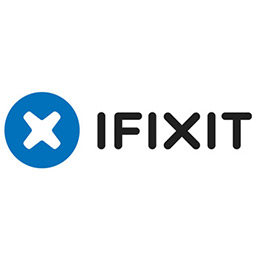
Empowering Repair, Enabling Reuse, Conserving Resources
iFixit is the largest free repair manual in the world. It’s nearly 20,000 guides have taught millions of people how to fix complicated electronic devices that might have otherwise gone into the landfill. The organization concentrates on electronics because e-waste is one of the fastest growing waste streams on earth. Teaching consumers how to repair their own electronics gives them an alternative to the dump. Moreover, repair is a more effective end-of-life strategy than recycling. Keeping a device out of the shredder and in use conserves the energy and materials that went into manufacturing the device. Electronics are some of the most resource intensive products humans know how to make. Despite the heavy environmental impact, we are consuming more electronics faster than ever before. The best shot we have at reducing the environmental impact of our electronics is to keep them around for as long as possible. iFixit is a complete repair resource to help owners extend the life of their electronics, ultimately conserving raw materials and reducing the demand for more electronics. iFixit has made the Inc. 5,000 list of fastest growing companies several times. The company designs specialty electronics repair tools and kits based off of data gathered from creating thousands of repair manuals. The company also sources and sells replacement parts. iFixit has pioneered several key partnerships with recyclers and universities, in order to keep expanding iFixit as a free repair resource. The result is that iFixit has been able to maximize its impact, while still keeping its team comparatively small. Despite the project’s success, iFixit has encountered several challenges to teaching DIY repair. Manufacturers haven’t been incentivized to integrate repairable, upgradeable design into their device development strategies. But as major manufacturers transition towards less upgradeable, more integrated designs—solidifying the link between repairable technology and sustainable technology has never been more important. It has taken iFixit more than a decade of advocacy, but repair is beginning to make inroads back into the global consciousness. And iFixit is actively participating in discussions involving the Circular Economy and encouraging manufacturers to incorporate repairable designs into their products. In the coming years, iFixit expects to continue to expand the number of free repair guides it offers to the public and will work to strengthen the ecosystem for repair. The project’s short term goals include more advocacy-related initiatives—including legislation—to promote repairability in devices. Its long term goals include building a more robust free resource for repair.
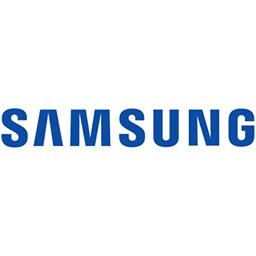
Samsung Screwless 2016 Curved Full HD TV
The UN55K6250 Curved Full HD TV is a milestone product for Samsung because it is engineered as environmentally the best in class. From the material sourcing, production and to the end of a product’s life cycle, Samsung’s focus on being green is unmistakable. With the new UN55K6250 Curved Full HD TV, Samsung continues to demonstrate an innovative balance of superior technology with sound sustainability practices. Industry’s first, Samsung uses ‘polyketone’, a new environmentally-preferred material made from carbon monoxide. At 1.5kg, polyketone greatly reduces greenhouse gas emissions compared to PC (Polycarbonate) (6kg) and ABS (3.1kg). About 31g of polyketone will make up the speaker in the nomination model series. In addition, this nomination uses another major milestone of source reduction for Samsung’s television design: screwless rear cover. On Samsung’s 55 inch television, there are 31 screws just on the rear cover alone. With Samsung’s innovative greener design, we removed these screws from the rear cover and instead use a snap closure method. This screwless design was no question for market viability since it reduces sources, cost, production and labor time, disassembly labor time during recycling, and even lowers the energy consumption at the manufacturing facility by eliminating the use of electric screwdriver. We ambitiously plan to apply this screwless rear cover on all but one series of televisions that will be launched in 2016, that’s 37 individual models! And the first of the screwless design rear covered television has already been made commercially available in March. Multiplying to the total number of volume forecasted at millions, the reduction in the environmental footprint is only at large. This year, Samsung will explore polyketone in the speakers of UN55K6250 and its series for the feasibility of potentially expanding to more models and other application in 2017. One of the new challenges will be to work closely with the polyketone supplier to source carbon monoxide from already emitted source such as industrial byproducts instead of creating new carbon monoxide while maintaining the quality of polyketone in order that Samsung does not compromise the quality of our products, a commitment we promise to our customers. We are thrilled by this opportunity to share our successful innovative-sustainability story because a continuous market challenge is to raise awareness to consumers in order to aid their purchasing decision to the environmentally-preferred products. Nonetheless, Samsung is enthusiastic about further reducing GHG emission thru every unit of UN55K6250 produced thru its screwless rear cover and the use of polyketone plastic. Previously Samsung has already reduced in sources by applying recycled plastic, by using soy ink that is high-density than regular ink, and in paper packaging from slimmer and lighter product designs. By far Samsung Screwless Curved Full HD Model UN55K6250 represents the next evolution in sustainable product development.
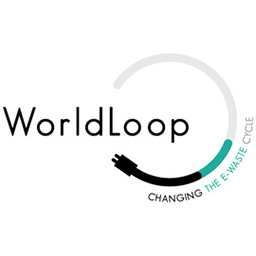
Resource Recovery Sub-Saharan Africa Connecting to Global Markets
WorldLoop works to promote responsible use, reuse and recycling of IT devices. This not only extends the original life of a product whose most intensive resource consumption is accounted for in the production phase of its life but also ensures that at the end of its intended life, the resources used can go back into new material production, avoiding landfills or incineration. WorldLoop partners with social entrepreneurs who work as e-waste collectors and recyclers in Africa by offering financial support, technical and managerial capacity building, and facilitating the reverse logistics of complex and hazardous fractions under the ‘Best of Two Worlds’ approach1 (Bo2W). First, seed funding is provided after the presentation of a strong business plan. Then WorldLoop provides technical training on how to test and repair products for reuse and to determine their reuse potential of ICT products and safe store and dismantle techniques for resource recovery. The social entrepreneurs also receive ongoing business management training to drive marketing, HR and accounting needs including cashflow management. Finally, WorldLoop facilitates the legal transboundary movement logistics related to shipping complex and hazardous waste ensuring that all relevant stakeholders and competent authorities are involved. WorldLoop has operationalised the Bo2W model combining local collection and dismantling efforts in developing countries with best-available-technologies for advanced recycling solutions available in industrialised countries. By providing an alternative to primitive recycling practices, and a solution for the non-valuable toxic material, WorldLoop creates a win-win-win for the economy, environment and society. WorldLoop is therefore an innovative social enterprise that truly helps in decreasing environmental and health threats by sharing savoir-faire and offering training that will have immediate positive impacts.
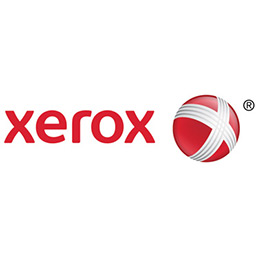
Resource Reduction of Toner Supplies through Life Cycle Innovation
At Xerox, sustainability is our way of doing business, rather than the cost of doing business. Attaining our goals and delivering quality sustainable products to our customer’s means going beyond the status quo and striving to innovate. The 2016 Catalyst Award nomination from Xerox highlights the sustainable benefits that Xerox has achieved through three important initiatives. These initiatives reduce resources associated with toner cartridges and containers by means of life cycle innovation, while many solutions today rely solely on reuse or recycling to reduce resource use. First, design changes implemented on many Xerox® toner containers reduce the amount of raw material resources needed to manufacture the container by 26% on average. Second, a plastic resin material change has been implemented on select Xerox® toner cartridges which reduces the amount of energy required to manufacture the toner container. The new plastic resin takes 8.8 gigajoules less energy per 1,000 kg of material to produce, therefore generating fewer greenhouse gas emissions. In addition to these environmental benefits, there are also supply assurance and cost benefits associated with this resin change. Lastly, innovative reuse, recycling, and remanufacturing processes have been implemented to manage the end-of-life of Xerox ® toner cartridges and containers. Xerox developed an Eco-Box program in order to facilitate the responsible end-of-life processing of toner supplies while balancing costs. By doing so there is a reduced burden on virgin materials, reduced cost associated with manufacturing new products, and reduced transportation distances. All returned supplies that pass quality and pressure testing go on to be reused or remanufactured. Any supplies that fail testing go through a patented materials separation process that recovers used materials for reuse in new products, with zero waste to landfill. Over the last four years, through the implementation of these three innovations, raw material for Xerox® toner supplies has been reduced by a total of almost 900 million kg and over 4 million kg CO2 eq. greenhouse gas emission has been avoided. The positive effects of resource reduction can be realized throughout the world because the world shares a single finite resource of raw material reserves and the burden of greenhouse gas emissions. The initiatives are also socially sustainable because of activities including reducing resources instead of relying on post-consumer material, reducing the burden on strained resources, and a partnership with an end-of-life processing vendor who gives supplies to underprivileged families. As with every new technology, innovation, or process there are challenges and potential trade-offs that come along with the benefits. The ultimate challenge when innovating to reduce environmental impacts is to overcome monetary costs associated with the innovation. However, Xerox has ensured that their resource reduction initiatives bear no extra cost to the customer, so that all associated sustainability benefits are realized. Overall, the 2016 Catalyst Award nomination from Xerox highlights the environmental, economic, and social benefits associated with life cycle resource reduction innovations for Xerox® toner supplies.

